Are you ready to take your career to the next level? If so, then an interior design resume might be just what you need. An eye-catching overview will help you break through the noise of Applicant Tracking Systems and onsite interviewers. If you’re looking for a job as an interior designer or want to add that experience to your resume in preparation for future job searches, and internal design resume is perfect for highlighting your relevant skills and knowledge. An ideal CV should combine the essential information about you with a personal touch that helps to hire managers to see who you are and why they should hire you. To begin writing your resume as an interior designer, follow these step-by-step instructions. You can also download and edit this template in Word.
Interior Designer Resume Example
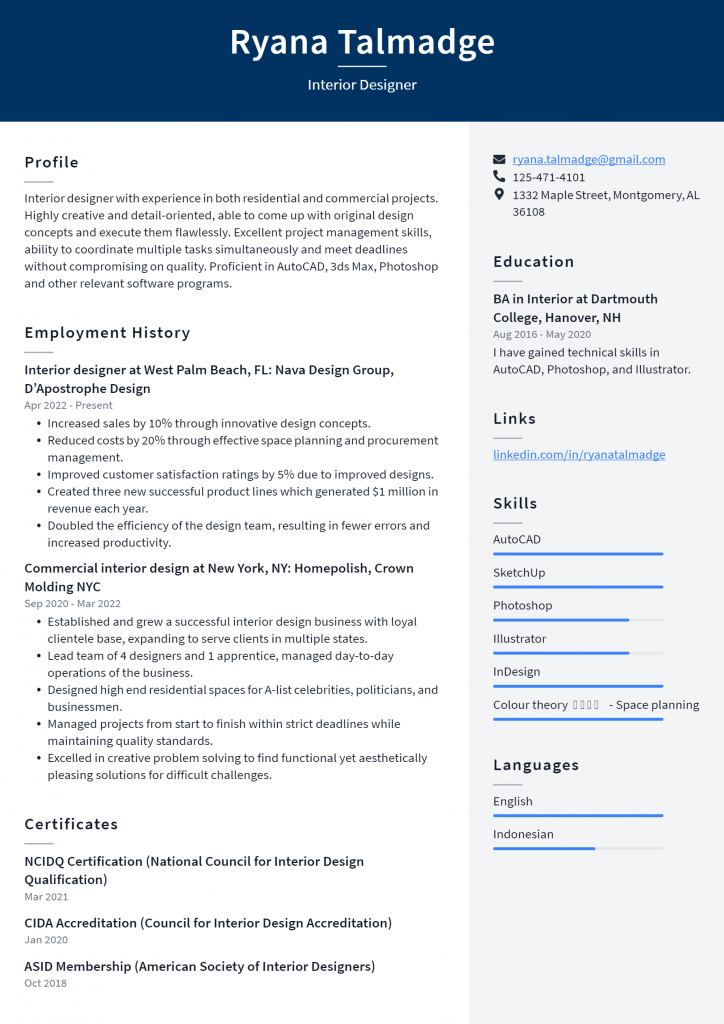
Download This Interior Designer Resume as PDF
Junior Interior Designer Resume Example

Download This Junior Interior Designer Resume as PDF
Senior Interior Designer Resume Example
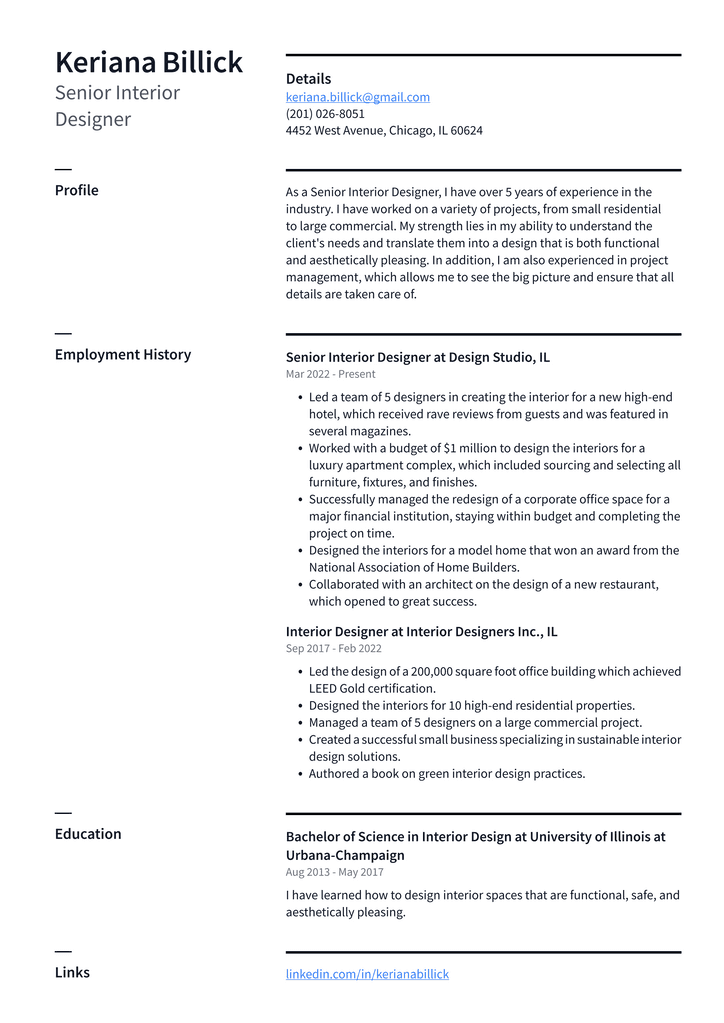
Download This Senior Interior Designer Resume as PDF
Associate Interior Designer Resume Example
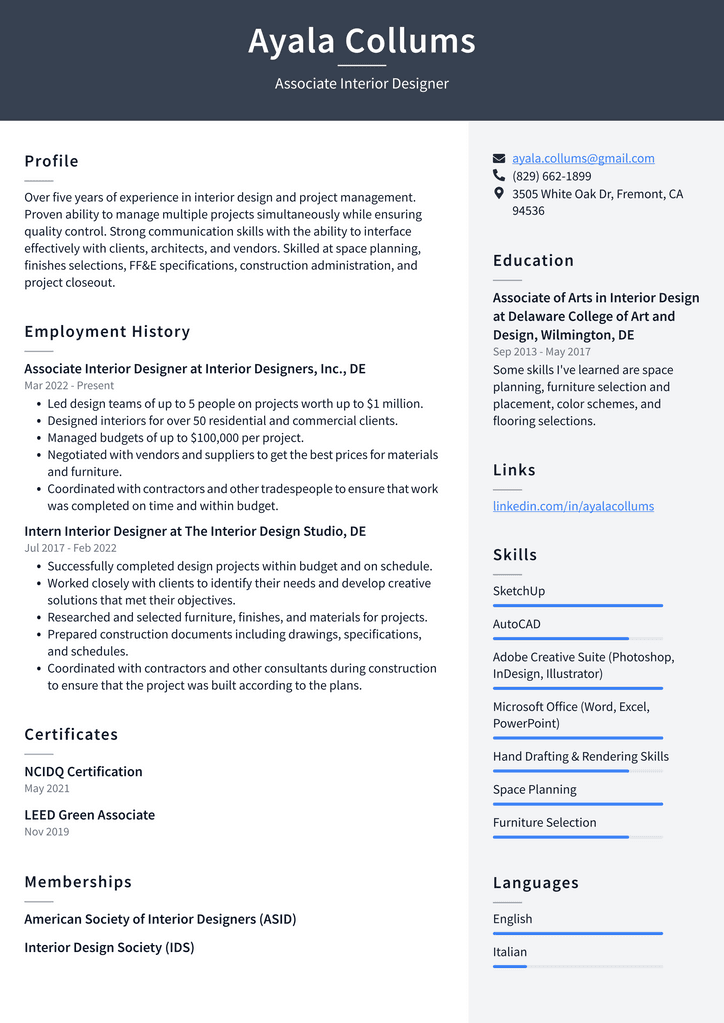
Download This Associate Interior Designer Resume as PDF
Lead Interior Designer Resume Example

Download This Lead Interior Designer Resume as PDF
Intern Interior Designer Resume Example
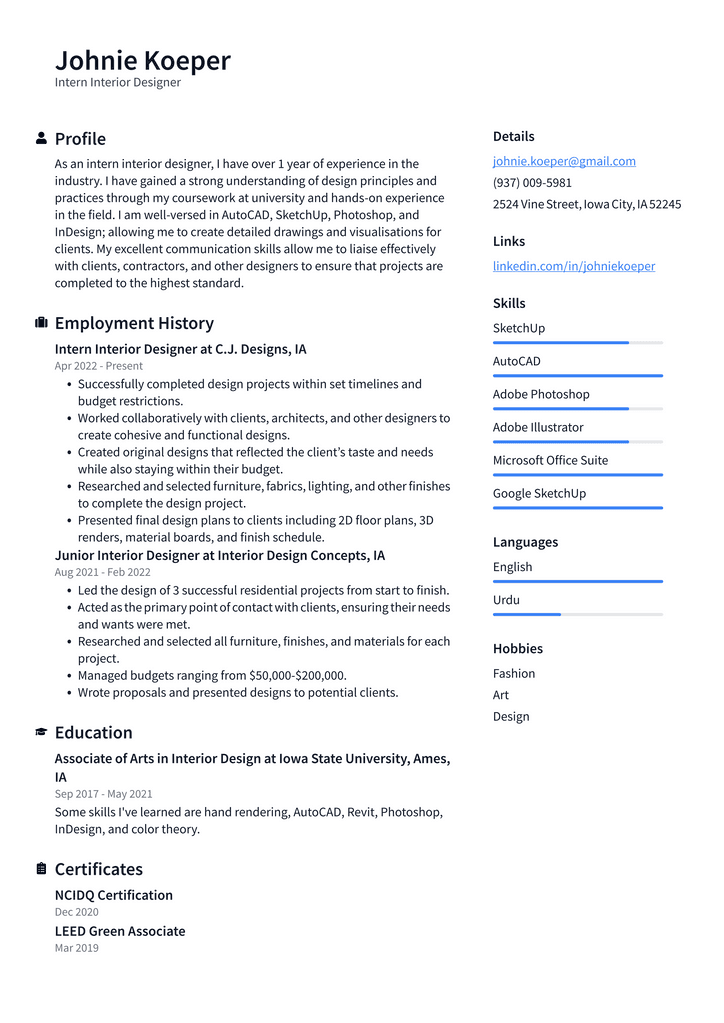
Download This Intern Interior Designer Resume as PDF
Assistant Interior Designer Resume Example
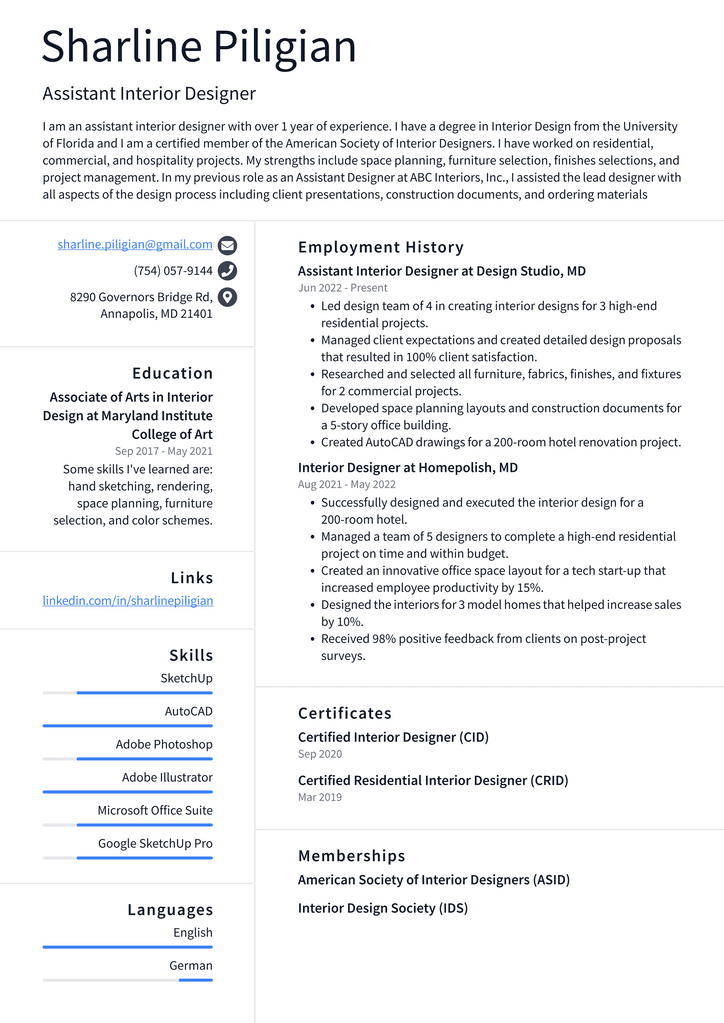
Download This Assistant Interior Designer Resume as PDF
Choose a Professional Resume Format
There are two resume formats: the chronological format and the functional format. The chronological format is best for individuals with a steady work history and no gaps. A practical design is best for those who want to highlight specific skills or experiences that may be unrelated to each other. It’s also ideal for individuals with a gap in their employment history. Pick the format that best suits you and your career. For example, interior designers usually have experience in real estate, architecture, or design. It’s best to highlight these experiences on your resume instead of focusing on your duties and tasks. Doing so will help hire managers quickly scan your resume and understand the value you can bring to the table.
Sum up your skills and experience
Interior designers have a lot of experience working with clients and on projects. Therefore, it’s essential to summarize the skills and expertise you’ve acquired throughout your career. Be specific when doing so. For example, instead of saying, “I’ve worked with interior designers and architects,” say, “I’ve worked with interior designers and architects to create designs and layouts for residential and commercial properties.” You can also use keywords and phrases to help hire managers quickly scan your resume and identify your skills and experience. Words like “client-facing,” “project management,” and “construction” will help you stand out from other candidates.
Mention the tools of the trade
The design and construction industry is full of technical terms and specialized equipment and tools. While it’s essential to include this information in your experience section, having it in your skills team is even more critical. Doing so will help hire managers quickly identify your skills and match them with job responsibilities. Please list the specialized tools and terminology you use in your work and add it to the skills section of your resume. Be sure to include the appropriate abbreviations so hiring managers can easily understand what you’re referring to.
Add your education
If you have a degree related to interior design, you should include it on your resume. If not, you can still include your education in the “Education” section. Be sure to list your degree and significance and the name of your school. If you didn’t finish your degree, you could still list it, but be sure to include a note explaining your situation. If you’re a recent graduate, you can have your expected graduation date to show hiring managers you’re committed to the field. If you’re not currently in school, you can still include your education but avoid the “expected graduation date” section.
Throughout your career as an interior designer, you’ll earn many achievements. Some of these may be directly related to your job, while others could be related to your personal life. Be sure to include both types of achievements in your resume. List the dates of your accomplishments and the names of the people or brands you helped. An achievement like “Built a client-facing design team that exceeded expectations” is much more impressive than “Led a team.” If you can, tie your achievements to the skills you’ve listed on your resume. Doing so will help hiring managers understand how your achievements directly relate to the job you’re seeking.
Write a professional bio
A professional bio is a short paragraph that summarizes the most important aspects of your life and career. It’s a great way to tie everything together and show hiring managers who you are as a person. Be sure to include information like your name, location, and education, as well as your career goal or what you hope to achieve in your next job. You can also include information about your family or other interests. For example, if you’ve been out of school for 10+ years, experience is more important than your education.
Conclusion
Your resume is your first chance to impress potential employers, which is why making a solid first impression is essential. An interior design resume is an excellent way to showcase your skills and stand out from the competition. If you follow these step-by-step instructions and use this resume sample as a guide, you’ll be on your way to creating an incredible resume as an interior designer. And with these tips, you can make sure your resume gets noticed.